Fleshy Fly photography
Assalamu Alaikum Wa Rahmatullah Everyone
Assalamu Alaikum Wa Rahmatullah EveryoneHello everyone,
Hope everyone is well,
Today I am going to show you a photography of a fleshy fly.
Fleshy Fly
I never knew the name of this fly. When I searched the photography of this fly on Google, the name of this fly came up as fleshy fly. While photographing this fly, I had several feelings which were very pleasant. While I was taking this photography, it kept flying and sitting on my finger and also on the phone and tickled me. I picked this fly from the leaves of my potato plant. The thing was the best, I had a very nice feeling.
I have described the characteristics and descriptions of this fleshy fly in my own way by gaining experience from Google. I do not know anything in detail about it, so I have found out their classification, their species and their names from Google.
Key features and facts about flesh flies:
Appearance:
They are usually dark gray in color and have black stripes on their chest. Like other flies, their eyes are red in color.
Food and Habitat:
These flesh flies are a familiar fly in all countries. They usually spread their larvae in animal carcasses, open excrement, and rotten, stale food.
Reproduction:
Female flesh flies deposit live larvae in rotting meat or other unhealthy environments instead of laying eggs.
Environmental Role:
They play an important role in decomposition and are also important in forensic entomology to estimate the time of death in legal investigations.
| Kingdom | Animalia |
|---|---|
| Species | Arthropoda |
| Class | Insects |
| Order | Diptera |
| Division | Schizophora |
| Suborder | Calyptrata |
| Superfamily | Astroidea |
| Family | Sarcophagidae |
(Collected from Google)
These are a family of flies commonly known as flesh flies. They differ from most flies in that they are ovoid, opportunistically hatching or hatching maggots, which are deposited on mammalian carcasses, dung, decaying matter, or open wounds, hence their common name. Some flesh fly larvae are internal parasites of other insects such as Orthoptera, and some, notably the Miltograminae, are kleptoparasites of single Hymenoptera.
Adults feed mostly on animal body fluids, honey, sweet foods, animal waste fluids, and other organic matter. Juveniles require protein for development and may be fed on carcasses, dung, or sweet plant foods (including fruits, nuts, and artificial food items).
I took this photograph of myself from Dakshin Buruj Bagan Mathpara under Sharsha police station in Jessore district.
I invite my friend's @jasimuddin0,@sumona05 and @tamimsobuj4
Thanks alot for reading .
Good luck to you.
Good luck to you.
Rumana Afroz

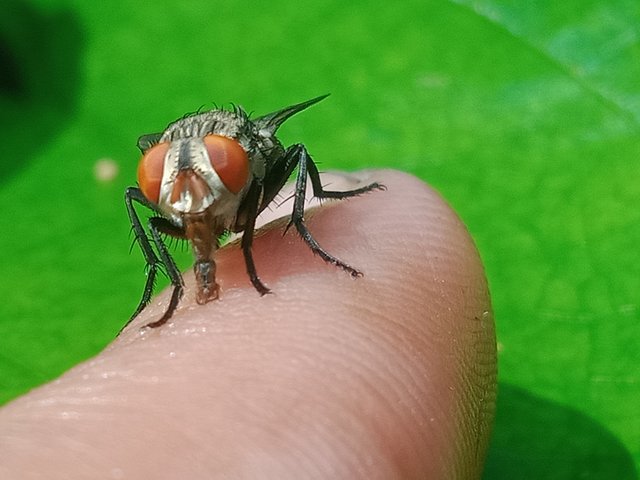
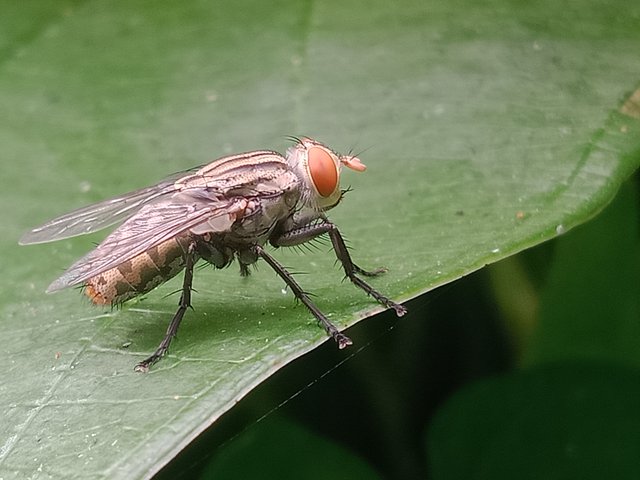
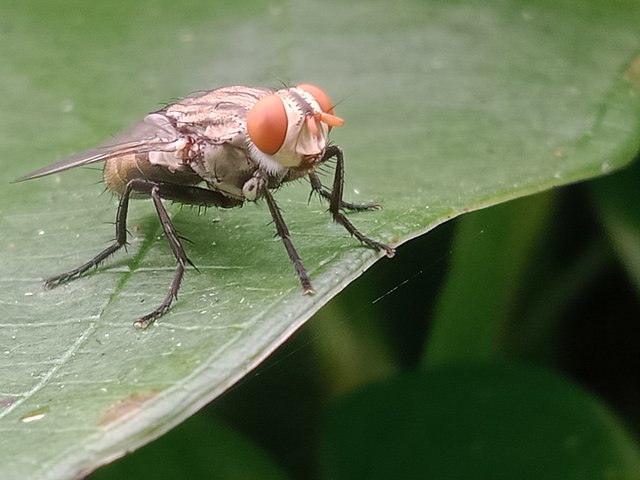
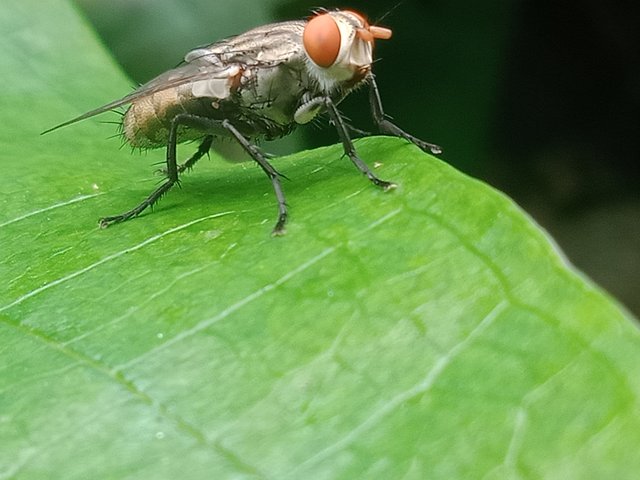
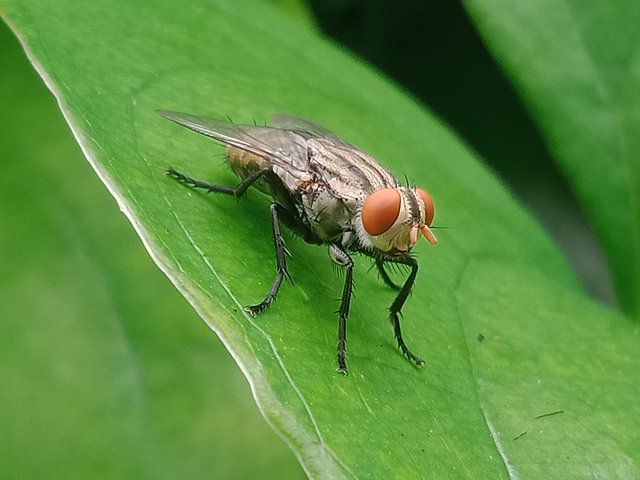
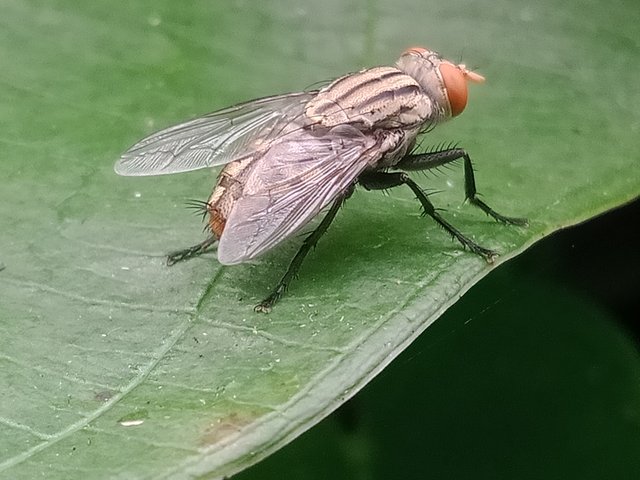
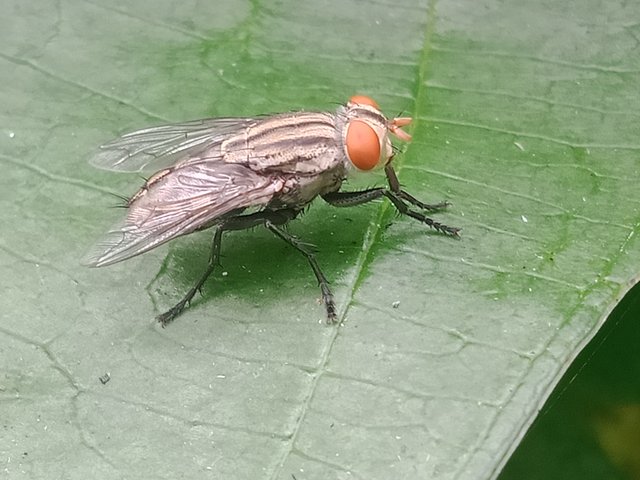
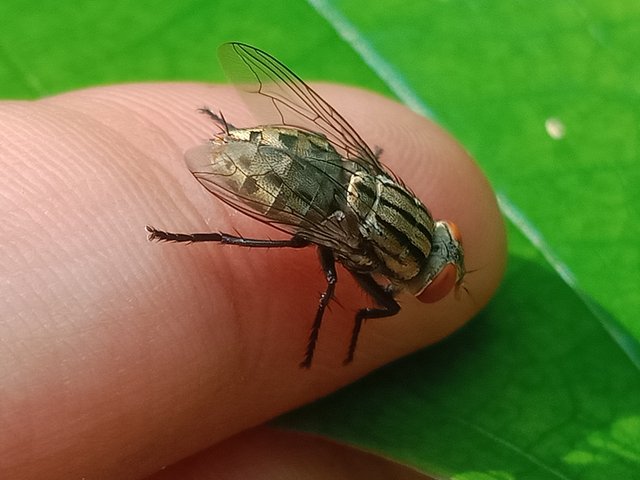
https://x.com/RumanaAfro73363/status/1973005892535923014
Excellent photography, best wishes to you, may God bless you always.
I was really impressed and delighted by the photography of the fly. I found the extraordinary photography of a small fly wonderful. However, I am very grateful to you for learning the beautiful name of the fly through you. Best wishes and love to you.
Welcome. 🦗🦋🕷Entry N° 2
Meet Eco-Lens Map
Greetings,
Welcome to this project called Eco-Lens.
You shared an excellent post with us, both in terms of photography, research, and anecdotal information, related to this species of fly.
It's great that you included the location on Google Maps; that made it easier to link it to the Eco-Lens Map.
In the future, be careful with the title; it's simple:
Use this format: "Insect Name + Country."
You mentioned that you did some research on Google, which is good, but remember to include links to the sources you consulted.
I hope to see you in week six of the contest.
🎉 Congratulations, @rumanaafroz!
Your post Fleshy Fly photography was rewarded by CCS Curation Trail
“Home is where your heart is ❤️.”
👉 Join the CCS Curation Trail | Community Invitation
✅ Vote for visionaer3003 as witness
Very clear view of the fly. Nice post.